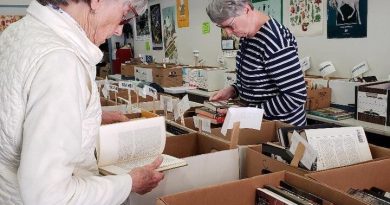Accomplishments of the Quincy Library Group
Just three days after the Fourth of July in 1993, 40 members of the Quincy Library Group lined up to sign their own declaration: their “Community Stability Proposal” for management of the Lassen and Plumas national forests and the Sierraville District of the Tahoe National Forest.
A review of the proposal in 2013 by the Pinchot Institute reported, “The collaboration that led to the Quincy Library Group’s Community Stability Proposal has been celebrated as a potentially transformative approach for federal lands management.”
The Group Plan
The Quincy Library Group, a citizens group composed of local loggers, civic leaders and environmentalists, collaboratively developed a plan to 1) create healthy, ecologically diverse and fire-resilient forests; 2) protect water, recreational opportunities and wildlife; 3) restore damaged wet meadows and other riparian areas; and 4) provide for long-term local economic stability for mountain communities.
Forests were overstocked with small trees, making forests vulnerable to catastrophic fires that killed the larger trees, destroyed soils and streams filled with sediment.
Bill Coates, one of the three organizers of the Library Group said, “These fires get so hot they take the surface right off rocks. These are not natural fires.”
Prior to European settlement, fires were, as a rule, more frequent, but less severe — taking out the overabundance of small trees in the understory, but not threatening the larger trees in the overstory.
The prescription was to take forests back to how they looked prior to European settlement; at the same time to remove smaller trees in such a way as to protect the endangered spotted owl and other wildlife, recreational opportunities and watersheds.
Lobbying
Coates said, “Once people signed the proposal, no one went back on their word and everyone fought for the proposal.”
The day after signing the proposal, the group presented their plan to the national forests and local communities.
When the U.S. Forest Service failed to respond adequately, 43 members of the library group flew to Washington D.C. and in groups of three, logger, civic leader and environmentalist, lobbied every legislator personally.
The groups lobbied for passage of the Herger-Feinstein Quincy Library Group Forest Recovery Act to thin forests and restore wet meadows.
The Act passed in October 1998 after a vote of 429-1 in the House of Representatives.
Coates said, “This was unprecedented, you couldn’t get a deal like that voting for the American flag.”
The act directed funds to implement a pilot project using the library group’s proposal to treat 1.5 million acres within the three national forests.
Besides targeting 200,000 to 240,000 acres to be thinned in five years, the act put 150,000 roadless acres of old growth forest off-limits to logging. It also protected all trees over 30 inches in diameter and buffered streams from the effects of logging.
Accomplishments
The project spent $78 million in 2008-2010 alone with additional millions spent before 2008 and after 2010.
The five-year project was delayed by litigation, which, according to John Sheehan, former Library Group member and director of Plumas Corp, consumed a lot of the money. Bureaucratic delays also meant that the project didn’t finish until November 2012.
Still, Sheehan reported that a lot of progress was made. The pilot project treated 300,000 acres of forest between 2000-2010 at a cost of about $1,000 per acre. In most cases, small merchantable timber paid for thinning.
Thinned forests acting as fuel breaks were constructed along roads and ridge tops — Defensible Fuel Profile Zones — to reduce the size and severity of fires.
The Forest Service reported that about 60 percent of the DFPZ network was in place by March 3, 2011.
The Pinchot Institute reported that these thinned fire breaks worked as designed to reduce fire size and severity.
The Forest Service also reported that 10,000 acres of meadows and riparian areas had been restored by 2011.
Disappointments
The Forest Service had estimated that the pilot project would provide 286 million cubic feet of saw logs to local mills per year, but the average harvest was only 79 million cubic feet per year. This was too little and too late to save most mills.
The Pilot Project targeted 40,000 to 60,000 acres thinned per year, however the number of acres thinned was only 30,000 acres per year. The total number of acres thinned was greater than proposed but took longer to accomplish.
Long-term impacts on the California spotted owl and other species of concern has yet to be determined. Most spotted owl populations in the west continue to decline.
Conclusions
The 2013 Pinchot Institute’s review of the pilot project reported that the project did leverage significant external funds and did contribute to positive social and organizational changes within the U.S. Forest Service, forestry and the community in general.
The library group still serves as a model for collaboration in the management of forests. Quincy is no longer “a divided, bitter community” as it was in 1993. Another founding member of the library group, environmental lawyer Michael Jackson, said in 1997, “These days, when people wave at me, they use all five fingers.”
The project also sped up the work of protecting forests from catastrophic fire, restoring wet meadows and other riparian areas and led to a large industry locally that continues to pursue the goals of the Community Stability Proposal.
The 25th anniversary of the signing of the Quincy Library Group’s Community Stability Proposal will be July 7, 2018. This is something worth celebrating.
Current group efforts to restore the environment will be described in the third and final episode of this series.



